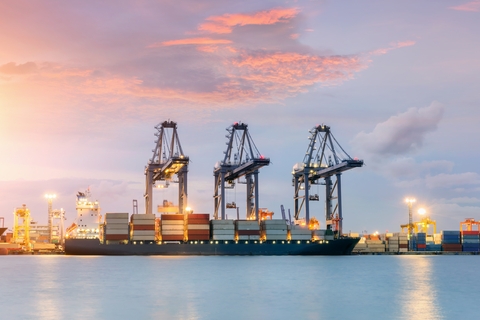In the world of international trade, shipping cargo across seas is a common practice that involves careful planning and preparation to ensure the safe arrival of goods. Whether you’re exporting products to distant markets or importing materials for your business, the process of preparing cargo for sea transport involves several critical steps to safeguard your shipments. One vital aspect of this process is the creation of a lashing certificate, which certifies that the cargo is securely fastened and ready for transit. Let’s delve into the general steps of preparing your cargo and understanding the importance of a lashing certificate.
Step 1: gathering essential information
Before embarking on any shipping endeavour, it’s crucial to gather essential information about the cargo you intend to transport. This includes the cargo’s dimensions, weight, shape, and special characteristics such as fragility or sensitivity to moisture. Additionally, details about the type and number of containers or pallets being used, along with the intended destination port and estimated transit time, play a vital role in designing a secure shipping plan.
Step 2: analysing and calculating
With the gathered information in hand, experts begin the process of analysing and calculating the optimal way to secure the cargo within the container or on the pallet. Several factors come into play during this stage, including the distribution of weight, balance of the cargo, friction, and tension of lashing materials, and even the forces of acceleration and deceleration that act on both the ship and its cargo. Environmental conditions, including temperature changes, are also considered as they can impact the integrity of the cargo during transit.
Step 3: creating a lashing diagram
To visualise the planned arrangement and securement of the cargo, a lashing diagram is created. This detailed diagram illustrates the layout and positioning of the cargo, indicating where lashing points are necessary. It also outlines the specific directions, types, and sizes of lashing materials that will be employed to ensure the cargo’s stability. This visual representation serves as a guide for both the shippers and recipients of the cargo, offering a clear understanding of the securing process.
Step 4: crafting the lashing certificate
The lashing certificate is a critical document that summarises the information and calculations derived from the previous steps. This certificate serves as an official declaration that the cargo has been appropriately secured and lashed according to international standards and best practices. In this document, the cargo’s details, the chosen securing methods, and the relevant calculations are outlined. This certificate provides reassurance to all parties involved that the cargo has been prepared with utmost care to withstand the challenges of sea transport.
Step 5: seeking approval and verification
Once the lashing certificate and diagram are prepared, they are sent to both the client and the shipping company for approval and verification, respectively. The client reviews the certificate to ensure that all cargo details are accurately represented and that the securing methods align with their expectations. Simultaneously, the shipping company’s experts assess the document to verify that the lashing plan adheres to industry standards and complies with safety regulations.
Preparing cargo for safe import or export over sea is a multi-step process that demands careful consideration and meticulous planning. Each stage, from gathering essential cargo information to creating a lashing certificate, contributes to ensuring that your shipments reach their destination intact and unharmed. The lashing certificate, in particular, serves as a testament to the thorough preparation and dedication put into securing the cargo. By adhering to international standards and best practices, you can minimise risks and uncertainties associated with sea transport, fostering a more efficient and secure global trade network. So, the next time you’re preparing to ship cargo overseas, remember the importance of these steps and the role they play in safeguarding your goods throughout their journey across the seas.
Relying on expertise for safe marine cargo
When it comes to the intricate process of preparing your cargo for import or export over sea, every detail matters. The steps outlined above highlight the comprehensive approach required to ensure your shipments reach their destination securely. However, navigating this complex terrain can be made significantly smoother with the assistance of seasoned professionals who possess a wealth of knowledge and experience in marine claims and assessments along with marine risk management and consultancy.
Enter our marine experts — a trusted partner with a proven track record in providing risk management services and consultancy, as well as handling marine claims and assessments. With extensive backgrounds in the maritime industry, our experts bring unparalleled expertise to the table. Their deep understanding of cargo securing, vessel dynamics, and industry regulations makes them a valuable asset in safeguarding your shipments. Our marine experts have been at the forefront of assisting businesses and individuals alike in mitigating risks associated with sea transport. Their proficiency in analysing cargo characteristics, calculating securing methods, and creating meticulous lashing diagrams ensures that every aspect of your shipment is meticulously planned for. Moreover, their ability to craft accurate lashing certificates adds an extra layer of assurance, certifying that your cargo is prepared in accordance with international standards and best practices.
Incorporating Sedgwick’s wealth of experience into your shipping process can help you navigate the complexities of maritime logistics with confidence. By collaborating with professionals who prioritise the safety and security of your cargo, you gain a competitive edge in today’s global trade landscape. Your partnership with Sedgwick not only ensures the safe transit of your goods but also allows you to focus on growing your business while leaving the intricate details of marine logistics to the experts.
Learn more > read about how our marine experts can help navigate the choppy waters of international losses.

